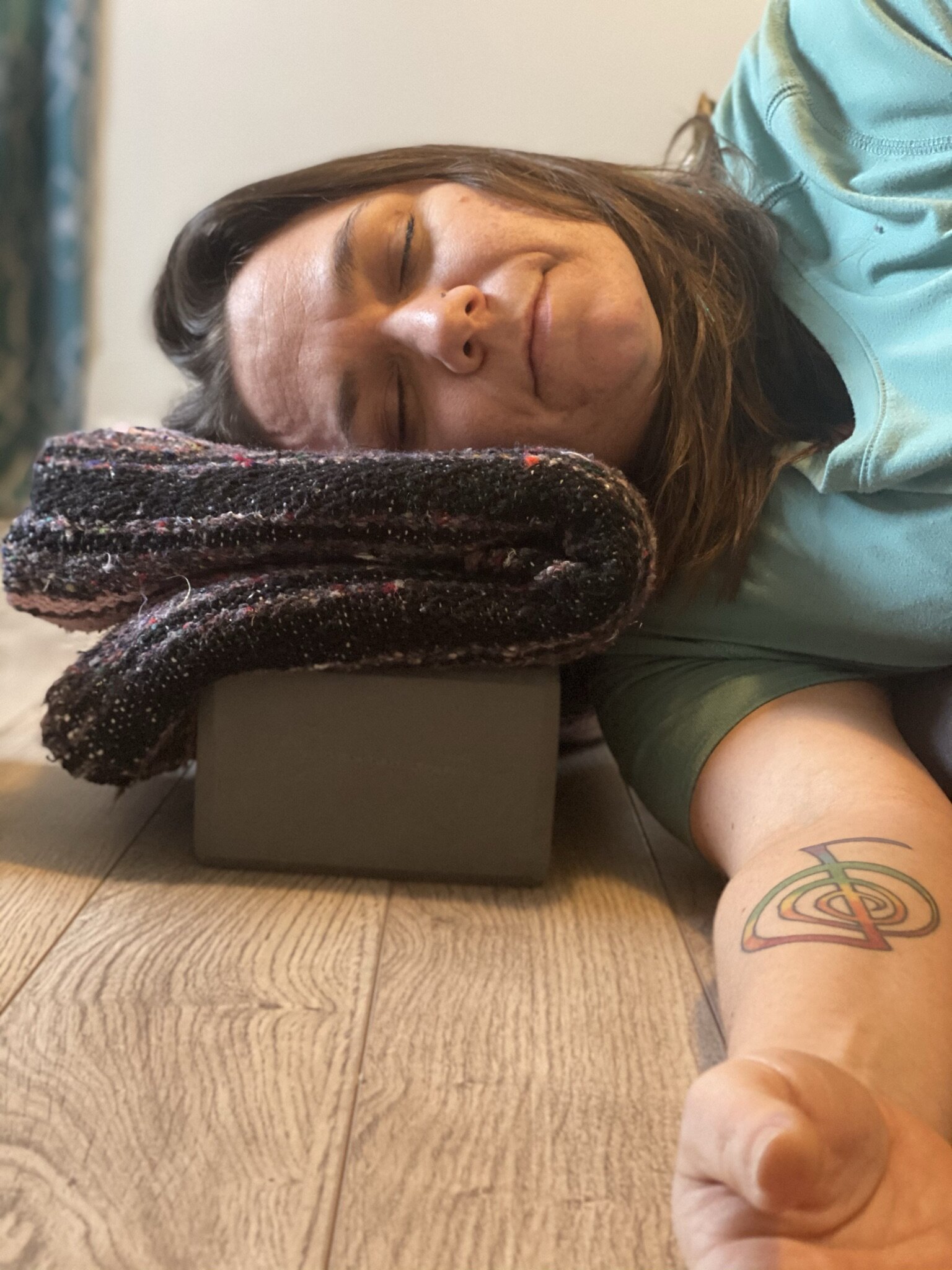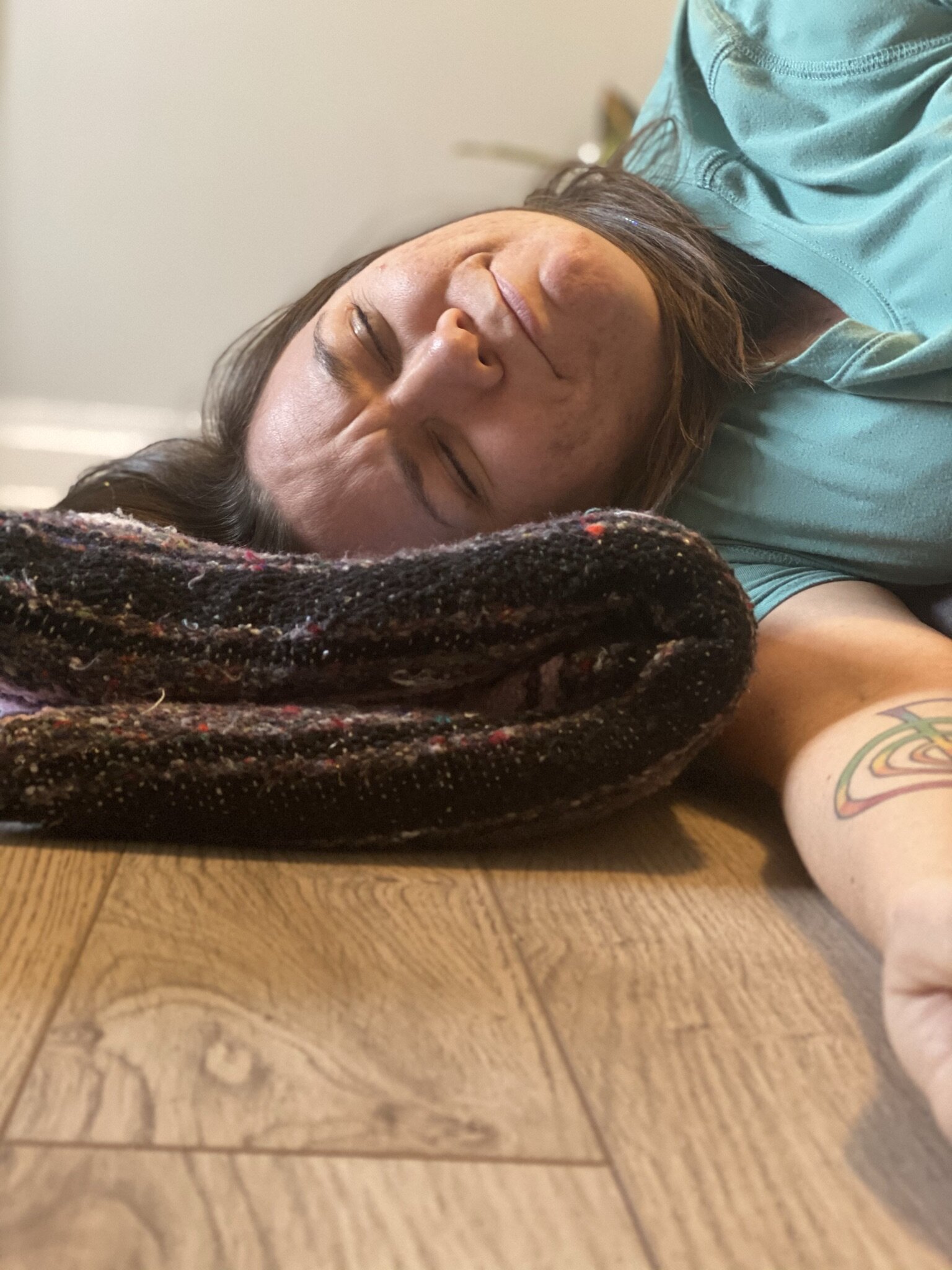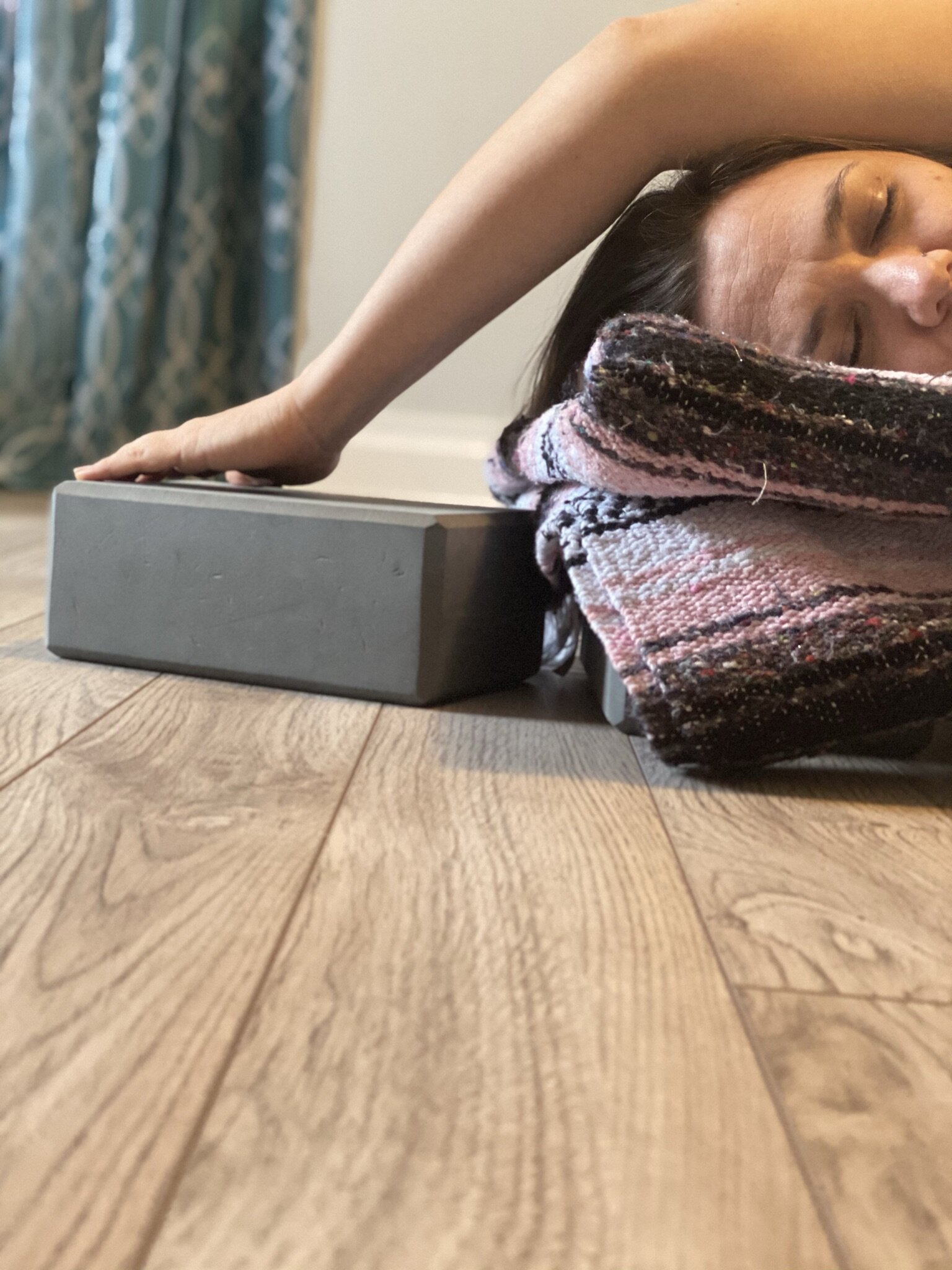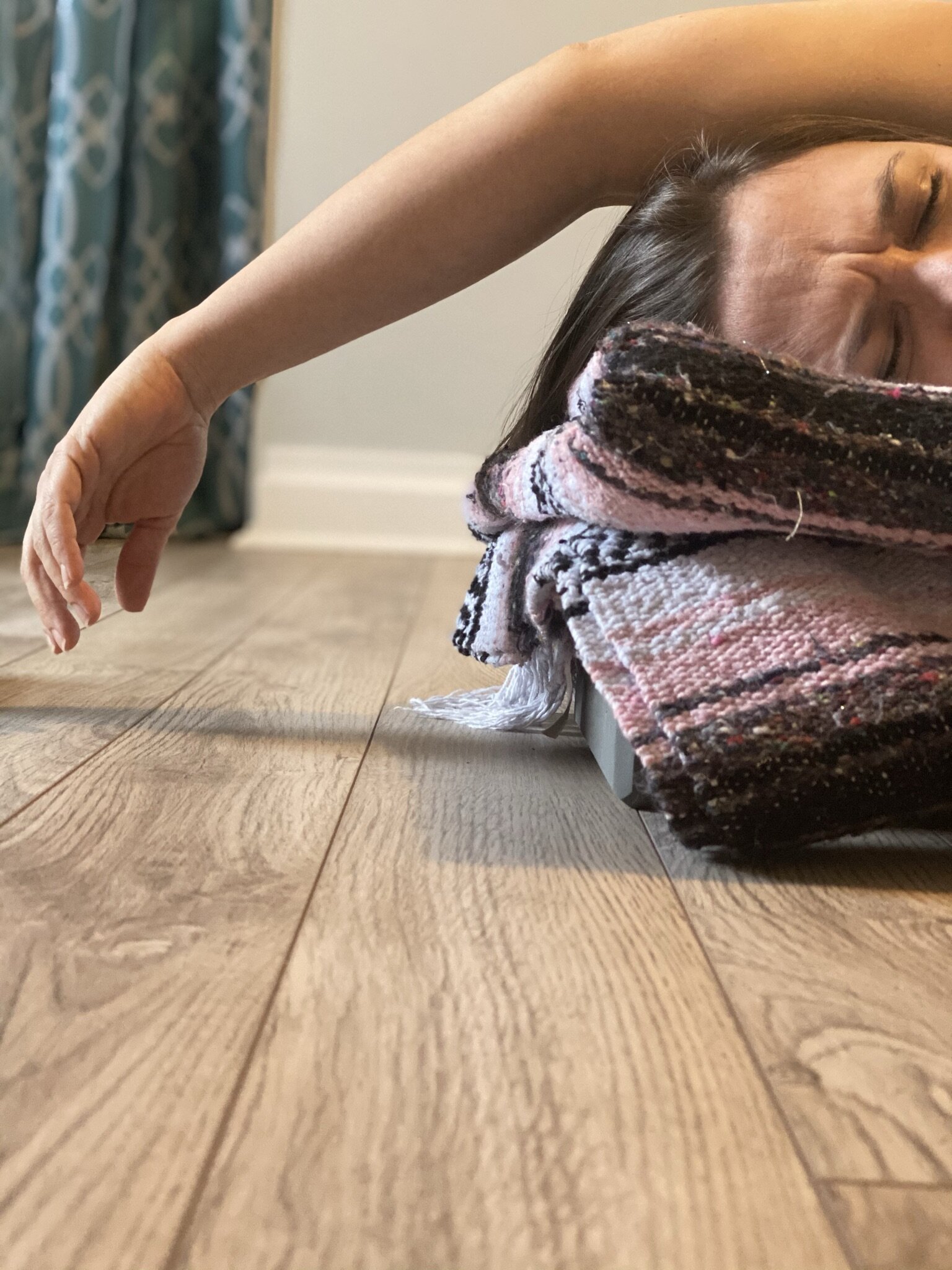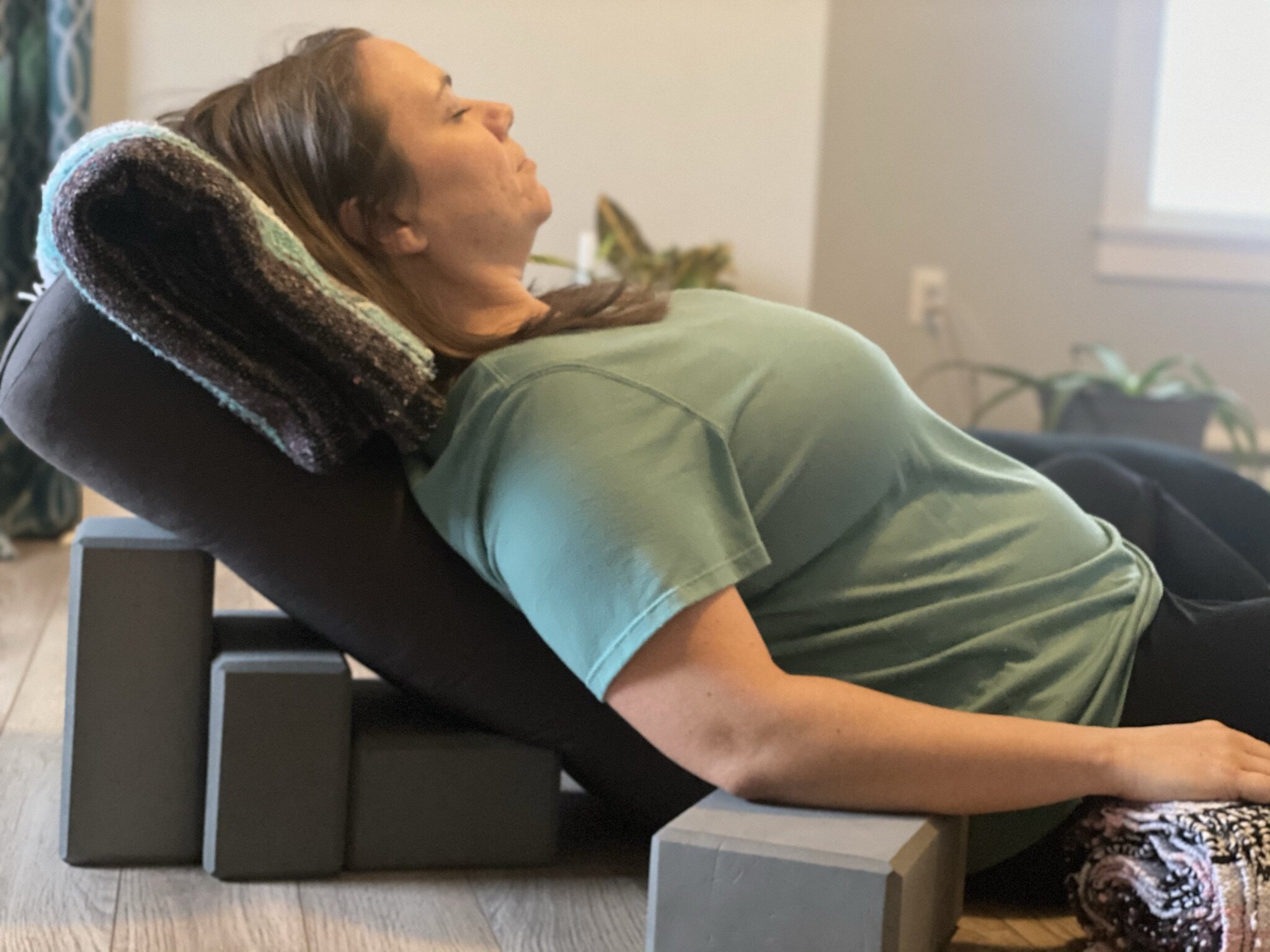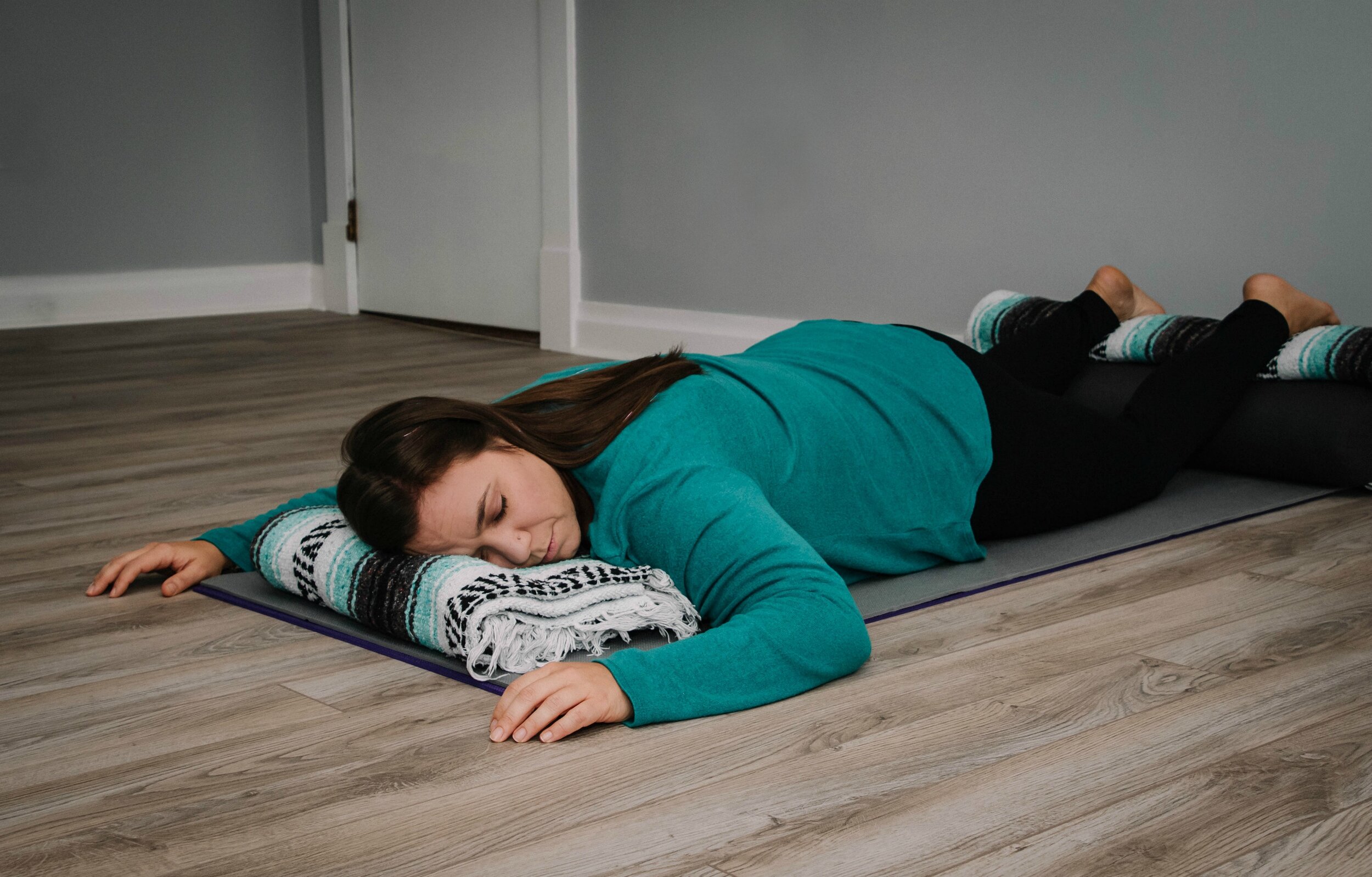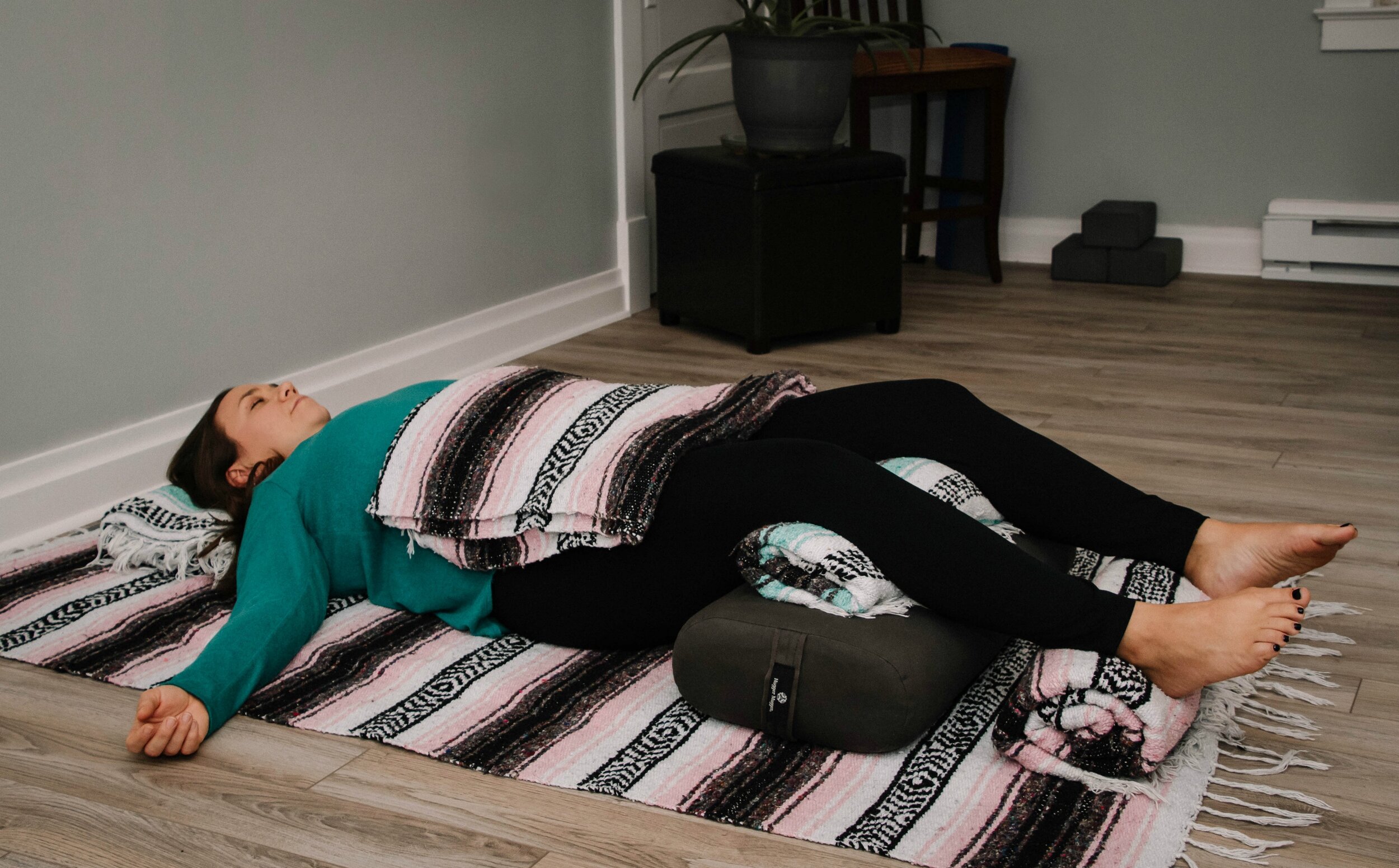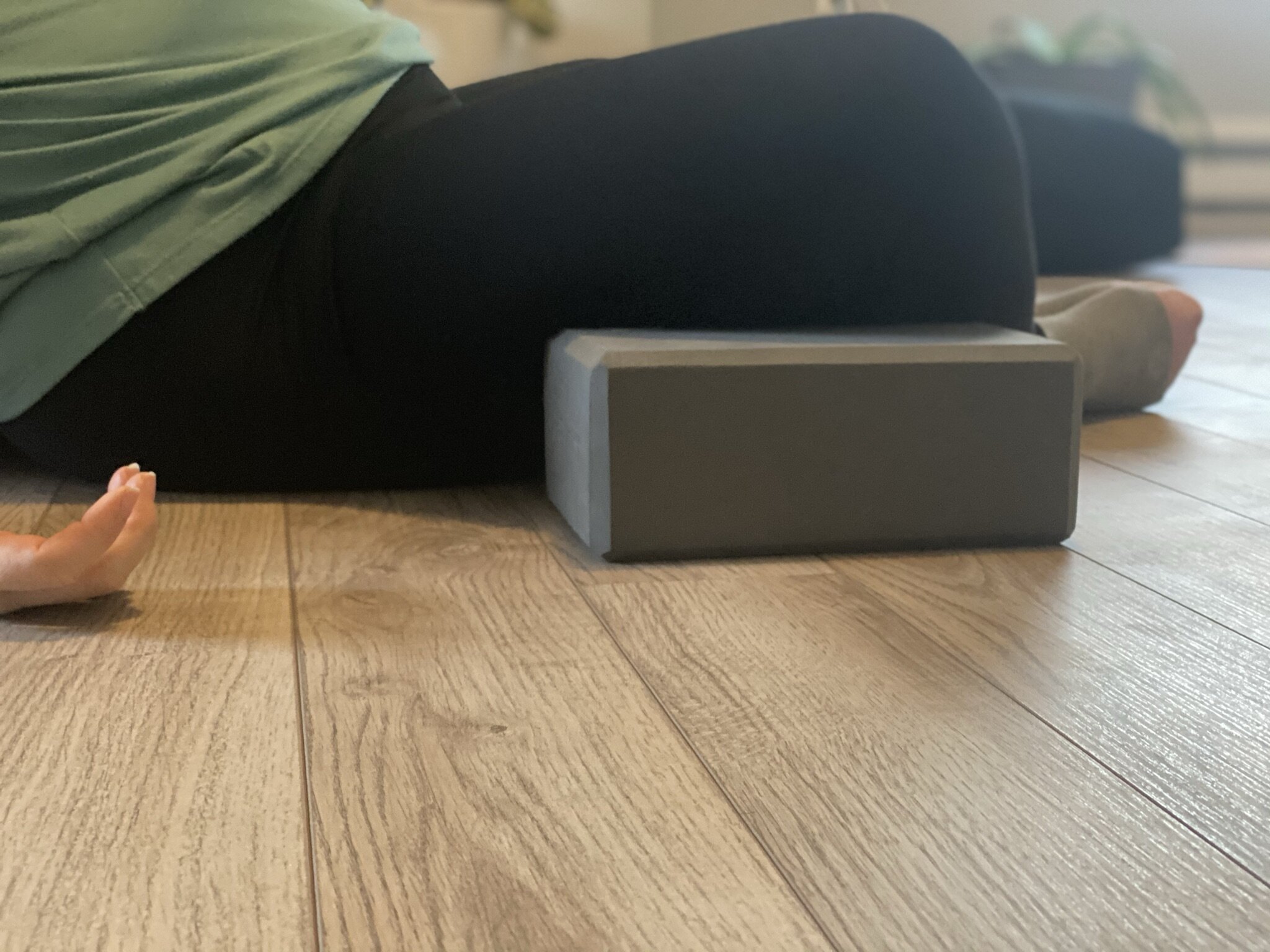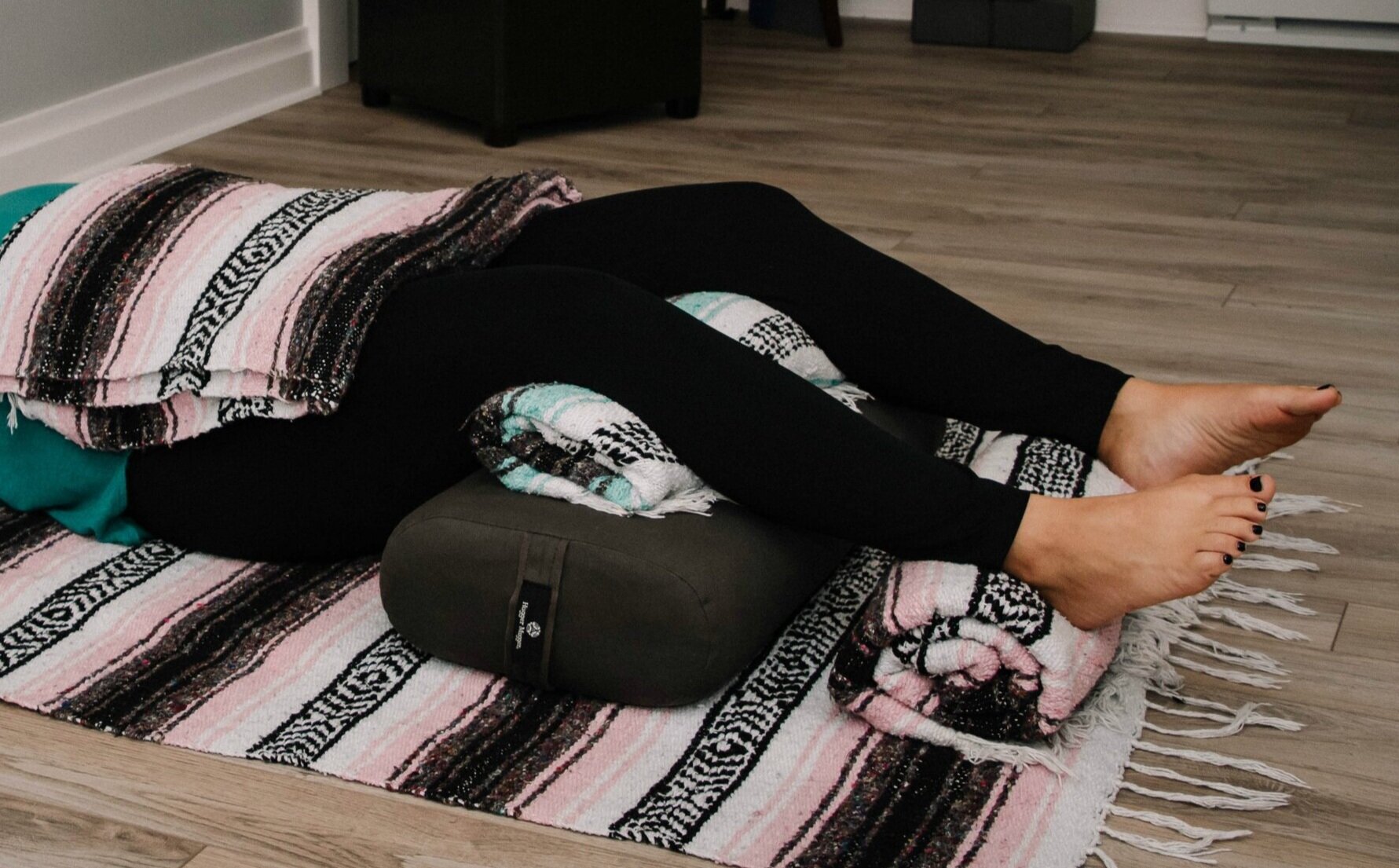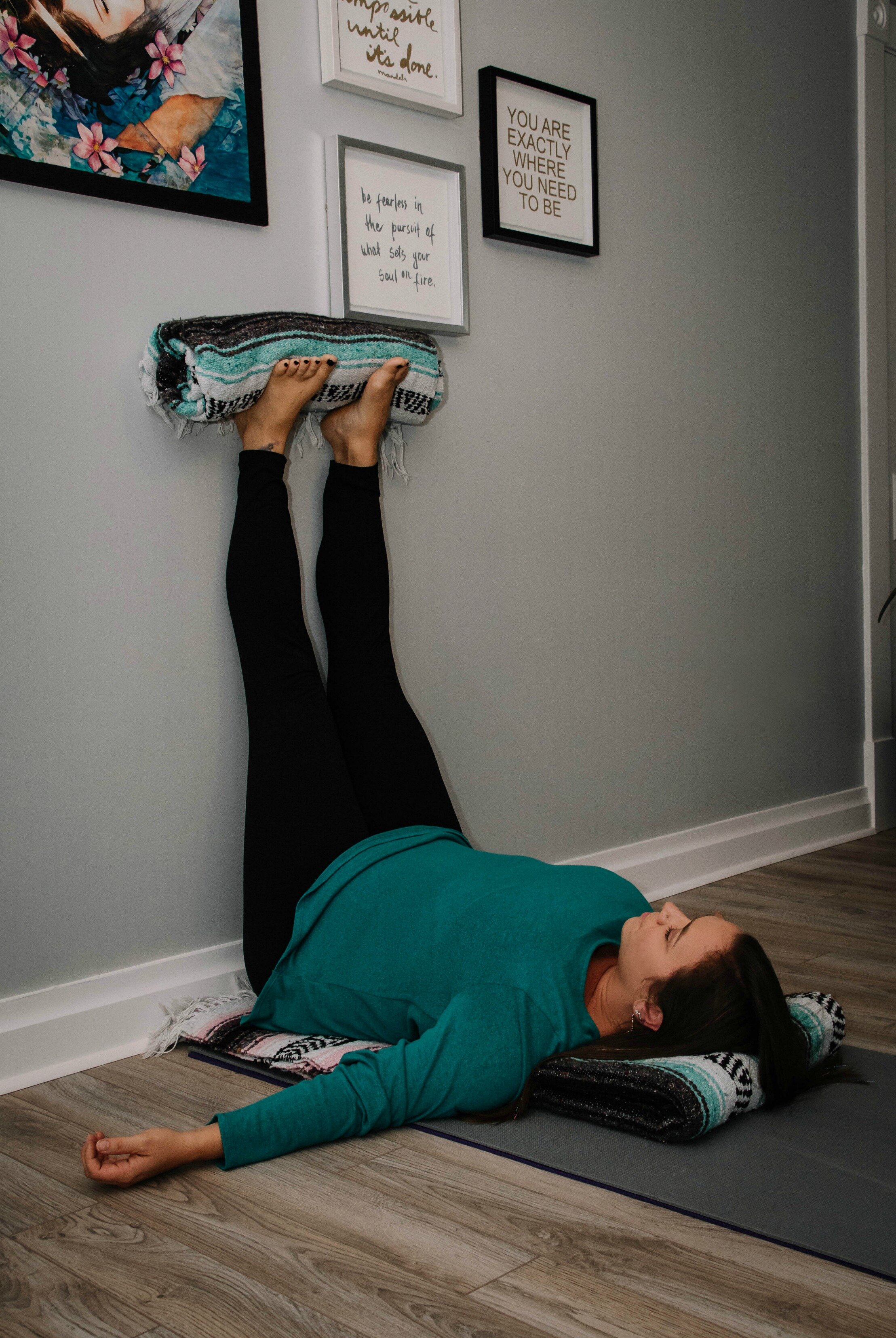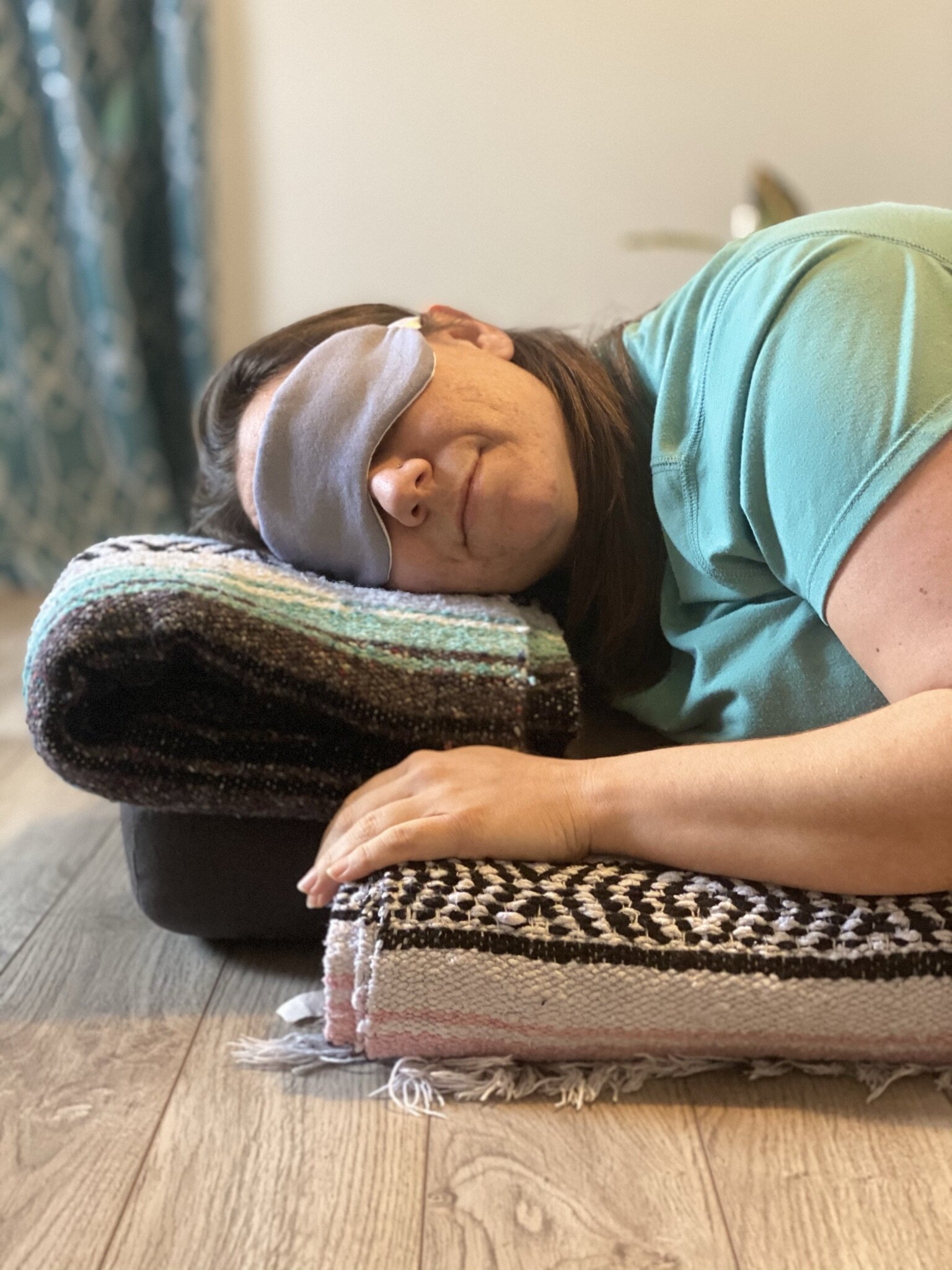In Restorative Yoga, props are an absolute must have! Perhaps you are not as big of a prop nerd or a Restorative yoga nerd as I am, but I think you’ll find some of these tips a fun and relaxing way to support your yoga practice. I want to help make this practice accessible to everyone so I’ll give you resources on where you can purchase the best bolsters, blankets, blocks, straps, and eye pillows and I’ll share some videos of how you achieve similar support using items you gather from your own home. You can buy most of my favorite props at Everyday Yoga. Full disclaimer, if you use my links in this blog, I will get a small percentage of your purchase.
Restorative Yoga is an experience somewhere along the journey between active asana and meditation. Jillian Pransky writes, “It's a little bit closer to a meditation practice than a movement practice—it's a way of practicing ‘meditation’ as a somatic, embodied experience.” To hear about some of my personal experience in my Restorative Yoga practice, check out my other blog.
Using props in Restorative Yoga reminds us of an important lesson - one that I am constantly revisiting myself, we don’t have to carry the weight of the world all on our own. It’s totally okay, and in fact encouraged, to accept help and to lean on others. Or in this case, lean on some blankets and blocks for support.
Blocks
Blocks can be a great tool in helping to bring the ground to your body. For example when we are resting in a Indulasana (Side Bend - Supported Variation), the head and the hand need support so they are not hanging out in space. You can place a block under your blanket for support of the head and you can use the block under your hand as the arm drapes overhead. As you can see from the facial expressions in the photos, settling into the shape becomes easier with the assistance of the blocks.
Another great place to use a block is under your elbows when practicing Supta Baddha Konasana (Reclining Bound Angle Pose). The bolster offers great support for your back but after resting for a long time the shoulders and arm start to get heavy and you will not be as comfortable without the support of the blocks. Personally, I prefer softer blocks for a Restorative Yoga practice, which you can purchase here.
Bolsters
Bolsters are a pillar of Restorative Yoga. In fact, I use a bolster in almost every pose. It’s a great support for your chest and abdomen in prone postures, your back in reclined postures, or under your knees in supine shapes. Here’s some examples of some poses I’ll use bolsters for in the supported variations:
Supta Baddha Konasana (Reclining Bound Angle Pose)
Jathara Parivartanasana (Revolved Abdomen Pose)
Savasana (Corpse Pose)
Shalabasana (Locust Pose - Supported Variation)
My absolute favorite brand is this Hugger Mugger version. If you are using this bolster a lot, this brand will last you forever! If you are looking for a more affordable option another option can be found here.
Blankets
I suggest having at least 5 of these Heavy Native Yoga Blankets to make sure you are well-supported in your Restorative Yoga journey. And of course you’ll want your favorite cozy blanket to cover up with to make sure you stay warm during your rest time. Blankets are used to fill in space where you need support and are easily folded or rolled to create a supportive shape, unlike the block and bolsters which are more solid.
You definitely want to have a blanket to support your head. The brain and the spinal cord function as the command center for the nervous system. In order to allow deep rest and relaxation to occur, you will want that blanket under your head and neck so the throat or the back of the neck isn’t too compressed. If the head and neck feel supported, the rest of your body and your mind is more likely to pick up on the relaxation and rest cues.
I hear teachers often suggest using blocks as a support for under the legs when doing a hip opening shape like Supta Baddha Konasana (Reclining Bound Angle Pose). However, in a Restorative Yoga practice, I find the softness and malleability of the blankets are much more useful in allowing the body to feel more at ease - especially for my friends in the tight hips club.
The cool thing about blankets is that you can pretty much fold them into any shape. You can mimic similar support that a block or bolster that would provide with a blanket.
Here’s another way you can use your blankets to support your legs in an extra cozy Savasana (Corpse Pose) or Viparita Karani (Legs up the Wall)
Eye Pillows
In my experience, many eye bags on the market are made a little too heavy for my liking to use during a Restorative Yoga practice. Sometimes, you’ll be resting in these poses for up to 20 minutes and the pressure the eye pillows bring can be distracting. The best eye pillows I have found are nice and light and do not become too heavy over the time you are resting. You could also opt for a sleep mask type eye covering which is nice for poses where you are resting on the side of your face in which case an eye pillow would fall off.
Straps
In the more active versions of the physical practice of yoga, straps are often used to help you gain access to a deeper stretch or allow you to feel the benefits and intentions of a shape. In Restorative Yoga, of course we don’t want to feel any stretch so I mostly use straps as a support to help take effort out of the legs in poses like Viparita Karani (Legs up the Wall) or Setu Bandha Sarvangasana (Supported Bridge Variation).


